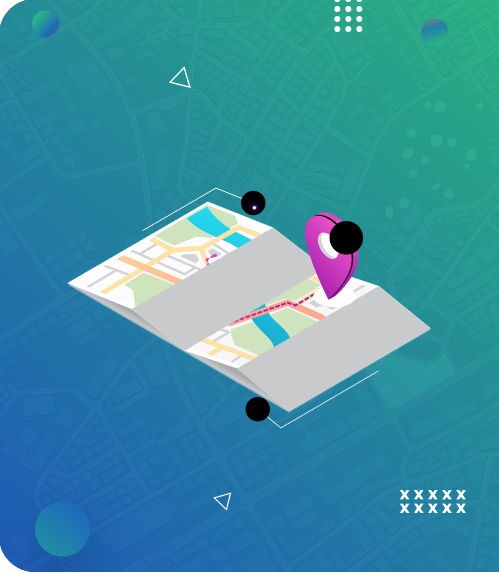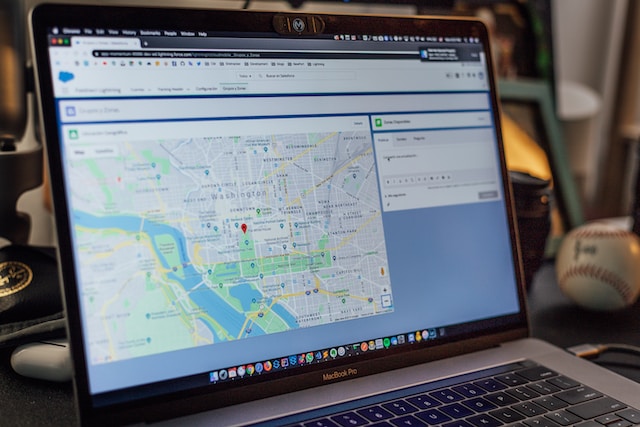In the world of logistics and supply chain management, finding the optimal locations for distribution centers is a critical puzzle to solve. Fortunately, this is where the center of gravity method comes into play.
Thanks to its simple yet powerful modeling technique, the center of gravity method offers a strategic approach. It helps optimize distribution networks and minimize costs while enhancing customer service. This post provides an engaging discussion of this method, how it benefits businesses, and how to calculate it.

- What Is the Center of Gravity Method?
- 4 Significant Benefits of Utilizing the Center of Gravity Method
- Easy Steps on How To Calculate the Center of Gravity
- Deciding Facility Location After Determining the Center of Gravity
- 4 Applications of the Center of Gravity Method in Operations Management
- 3 Limitations of the Center of Gravity Method That You Should Know
- Mapize Provides Effective and Practical Mapping Solutions to Business Owners and Professionals
What Is the Center of Gravity Method?
Understanding the center of gravity can be a major determinant in taking your business to greater heights. So, let’s answer the question, “What is the center of gravity method?” The center of gravity method is a mathematical modeling technique determining the optimal location for distribution centers or facilities within a network.
The center of gravity method has a firm notion that locating a facility at the geometric center of a distribution network helps minimize transportation costs. For instance, suppose you have a radius map of your customers spread across different locations, each with their demand levels. In that case, the method will help identify the most advantageous spot to place a distribution center. This will ensure efficient transportation of products to customers at reduced costs.
4 Significant Benefits of Utilizing the Center of Gravity Method
Now we have understood the center of gravity method, are there benefits when you use this method? Let’s take a look at some of them below.
- Cost Reduction: Businesses can minimize transportation costs by strategically locating distribution centers using the center of gravity method, resulting in significant savings.
- Enhanced Customer Service: Proximity to customers translates into shorter lead times and faster deliveries. This method enables businesses to improve service levels and boost customer satisfaction.
- Flexibility and Expansion: It assists network redesign and facilitates geographic expansion planning. It also empowers businesses to adapt to evolving market conditions and ensure their distribution networks remain agile.
- Risk Mitigation: Diversifying distribution center locations reduces supply chain risks. By spreading facilities across regions, businesses can minimize the impact of disruptions, ensuring continuity of operations.
By embracing this method, businesses can optimize operations and remain competitive in today’s dynamic business environment. Certainly, you want to know how to calculate the center of gravity via this method. Let’s discuss it in the next section.

Easy Steps on How To Calculate the Center of Gravity
One fundamental element in the center of gravity method is knowing how to calculate the center of gravity. While there are specific factors to consider, like customer demand, transportation costs, and distance. Let’s explore the step-by-step process of calculating the center of gravity.
- Data Collection
The first step is to gather the necessary, up-to-date, and accurate data. This includes information on customer locations, demand volumes, transportation costs, and more. Also, having these pieces of information help in utilizing the center of gravity method efficiently.
- Geocoding
After collecting the necessary data, the next step is to geocode. This process involves converting customer addresses into geographical coordinates to calculate distances accurately. Interestingly, various geocoding tools help automate this conversation easier for you.
- Weighted Calculation
Assigning weights to customers based on their importance or demand volume is the next step. These weights reflect the significance of each location within the network. For instance, a customer with higher demand may have a weight assigned to it.
- Distance Calculation
The next line of action is to calculate the distance between each customer location and potential distribution center locations. This involves using the geographic coordinates obtained from the geocoding step. You can measure the distance between these two locations using mathematical formulas, such as Pythagoras’ theorem.
- Calculate the Center of Gravity
The heart of the process lies in calculating the center of gravity itself. This involves taking the weighted average of the latitude and longitude coordinates of the customers, considering the demand weights assigned to each location. The formula for calculating the center of gravity is:
Center of gravity latitude = (customer latitude × customer weight) / (customer weight)
Center of gravity longitude = (customer longitude × customer weight) / (customer weight)
Deciding Facility Location After Determining the Center of Gravity
Once you have determined the center of gravity, the final step is deciding on the location of the distribution center. The center of gravity method provides valuable insights into the optimal placement, considering factors including customers’ location and demand.
You can position your distribution center directly at the calculated coordinates. You can adjust it to accommodate other practical considerations, such as available real estate or infrastructure.
It is beneficial to note that the calculations above assume a two-dimensional representation, considering only latitude and longitude. Supply chain networks often involve multiple dimensions, such as altitude or specific regions. Therefore you may require additional considerations and adjustments for these complexities.
Moreover, it is essential to recognize that the center of gravity method simplifies transportation costs by primarily focusing on the distance traveled. For a more comprehensive optimization, you should consider other factors like traffic conditions, road quality, transportation modes, and demand variability.

4 Applications of the Center of Gravity Method in Operations Management
There is a significant impact of the center of gravity method in operations management. It explicitly optimizes distribution networks and facility location decisions. Let’s consider four applications of the center of gravity method in operations management.
1. An operations team collaborating on how to improve their business effectively.
One of the primary applications of the center of gravity method in operations management is the optimization of distribution networks. Efficiently designing a distribution network involves determining the number, location, and capacity of distribution centers or facilities. The center of gravity method aids in this decision-making process. This ensures minimized transportation costs, reduced lead times, and improved efficiency.
2. Center of Gravity Method Facilitates Location of Facilities
The center of gravity method helps businesses make informed decisions regarding facility location. Whether a business is expanding into new markets or undergoing network redesign, determining the optimal location for new facilities is crucial. This method considers customer demand patterns, transportation costs, and other relevant factors to identify the most helpful location.
3. Center of Gravity Method Contributes to Risk Management
Interestingly, the center of gravity method contributes to risk management in operations management. Businesses can mitigate supply chain risks by diversifying distribution center locations based on the center of gravity.
This is particularly important in the face of natural disasters, labor strikes, political instability, or other disruptive events. By spreading distribution centers across different regions, businesses can ensure business continuity and minimize the impact of disruptions on their operations.
4. Center of Gravity Method Helps in Resource Allocation
The center of gravity method also aids in the effective allocation of resources. By optimizing the location of distribution centers, businesses can better allocate inventory, labor, and transportation resources.
Consequently, it leads to improved inventory management, reduced stockouts, and enhanced utilization of resources. Businesses can streamline their operations by aligning their resource allocation with their calculations, maximizing efficiency and minimizing waste.
Ultimately, the center of gravity method is valuable in operations management. As explained earlier, its application enables businesses to achieve cost-effective operations, enhance customer service, and effectively manage risks.
3 Limitations of the Center of Gravity Method That You Should Know
While the center of gravity method is a valuable business tool, it has limitations. These limitations help you employ this method better without creating problems for your business.
- Demand Variability: The center of gravity method does not explicitly consider demand variability or seasonality. Customer demands may fluctuate significantly throughout the year, and failing to incorporate this dynamic aspect may lead to inefficient facility placements.
- Single-Objective Optimization: This method focuses primarily on minimizing transportation costs. It overlooks other important factors such as inventory holding costs, labor availability, or tax implications. Companies should consider these additional factors to make comprehensive decisions.
- Dynamic Nature of Supply Chains: Supply chains are subject to continuous changes, such as new markets, altered demand patterns, or shifts in transportation infrastructure. This method provides a static solution, and companies must periodically reassess their facility locations to adapt to evolving business conditions.
Mapize Provides Effective and Practical Mapping Solutions to Business Owners and Professionals
Indeed, the center of gravity method is a powerful tool with immense potential in optimizing distribution networks and making strategic decisions in operations management. It ensures businesses achieve cost efficiencies and improve their overall operational performance. However, businesses should leverage advanced and innovative solutions to fully unleash the benefits of the center of gravity method.
Interestingly, Mapize, with its cutting-edge mapping and geospatial analysis capabilities, provides businesses with a comprehensive and visual representation of their distribution networks. It creates an interactive map, empowering businesses to visualize their network, identify patterns, and make informed decisions.
Furthermore, Mapize facilitates collaboration and communication among stakeholders. Maps’ visual and intuitive nature simplifies complex information, making it accessible to all team members. So, endeavor to join Mapize and create your first custom maps for free.






